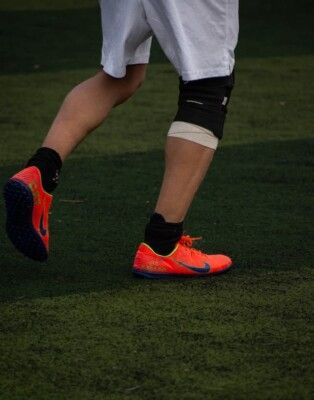Bandages – why they not only support but also support the healing effect
Who loves himself and his body, should also make sure to protect it well. Whether professional athlete or in leisure time, bandages can be used to stabilize joints. This can take place due to a therapy or preventively.
Bandages have a very positive effect on the bones and joints and can even relieve pain and help with healing.
But what exactly should you pay attention to and what types of bandages there are actually?
General advantages of bandages
A bandage is probably one of the oldest aids for physical limitations. Even at the time of the pharaohs knew bandages and their effect.
Also the mummies were held together by them. The word bandage comes from the French and means as much as connection.
Today we know two different forms of bandages. On the one hand, you can find elastic bands that are wrapped around certain parts of the body as protection, as well as compression bandages that are used for therapy or prophylaxis for joint problems and muscle ailments.
Bandages have numerous advantages
- Bandage relieve pain and relieve,
- Promote mobility,
- have an activating effect on bones and joints,
- are breathable and do not cause sweating,
- are antibacterial and have a high wearing comfort,
- protect during contact sports and falls,
- Can be found in different sizes.
Bandages are therefore useful aids in everyday life and can help with immobility and pain.
They are used for the hands, ankles, back, elbows, etc. In orthopedics, they are used to restore, support or promote physical mobility.
They are used for numerous complaints, injuries and impairments of the human musculoskeletal system. But how exactly do they work?
How do bandages work?
A bandage can protect, support and relieve the joint and bone. Usually it sits firmly and is nevertheless very comfortable.
It therefore offers a high level of comfort. Affected areas are effectively protected from possible overexertion by bandages.
Bandages can also prevent injuries. In many sports, they are therefore simply indispensable and serve as
prophylactic aid.
Support is also naturally improved by the bandage, which is why it also relieves pain caused by overstretching of ligaments, for example.
Due to the particularly elastic bandage can also consolidate their own body perception.
The affected areas are automatically more protected by them. In any case, a bandage always gives a feeling of additional security.
Compression is created by the movement, i.e. the tensing as well as relaxing of the muscles and by the tightness.
Incorporated pads can additionally massage the tissue. (By the way, the pads are a kind of padding.)
This procedure also increases blood circulation. In case of inflammation this can be extremely positive for the healing process. Swelling subsides much more quickly as a result.
Originally, bandages were used to achieve a compressing effect. Pressure counteracted the pain in this way.
In many cases, knitted bandages are used today, which have an areal compression.
They are much more tolerable due to the breathable textiles and therefore do not need to be rewound again and again.
The most common types of bandages
The wrist bandage
Since our hands have to work for us every day, irritation or an unpleasant tendon sheath inflammation occurs from time to time. A wrist bandage can counteract these complaints through targeted pressure on the forearm.
The bandages not only relieve pain, but also relieve the muscles. This allows them to regenerate more quickly. They are also extremely helpful for strains and sprains. You can even find special bandages for the thumb joint.
The elbow bandage
Also our elbows give us great performances in everyday life. Through them we can bend, stretch, rotate the arm, etc. Often it comes however to overloading. In sports, for example, it can quickly come to the dreaded tennis elbow. This is caused by an excessive, one-sided load.
With an elbow brace, there are built-in massage pads that can relieve pain and reduce swelling. In case of arthrosis and arthritis it is also used again and again.
The back brace
It is used for acute and chronic changes in the area of the spine. These can significantly restrict the freedom of movement. At this point, the bandage helps directly in the therapy of back pain or preventively.
A back brace can even be custom made in some circumstances for optimal support. Thus individual problems can be solved.
Applied in cases of osteoarthritis of the spine, back pain and hyperparalysis, often also in pregnancy as a supportive measure against back pain or wear and tear of the ligaments.
How to recognize a good bandage?
The support must fit in any case. Even in action it must not press or be constricting. Especially important is a skin-friendly, breathable material that can promise a pleasant wearing comfort.
A good bandage should be able to absorb moisture and conduct it to the surface. Sore spots can be avoided.
Conclusion
Bandages can not only positively influence the healing process, but also help against pain and find their use as a preventive measure.
It is important that the support fits well, has a good material to offer and, of course, has been properly fixed in place.
In addition, it should be able to transport moisture to the surface and be breathable.
Bandages are used today for various complaints and problems, improve mobility and should therefore always provide support. Also in the sport they are gladly used.
